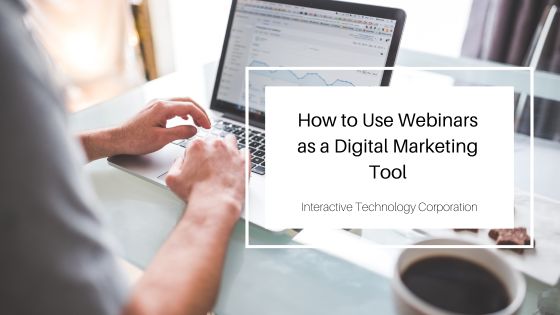Webinars have emerged as powerful digital marketing tools, enabling businesses to engage with their audience in real time, build credibility, and drive leads. Leveraging webinars effectively requires a strategic approach. Here’s how to use webinars to maximize your outreach and impact.
1. Define Your Goals and Audience
The first step in using webinars effectively is to define your goals. Are you aiming to generate leads, educate your audience, or promote a new product? Clear objectives help shape the content and structure of your webinar.
Next, identify your target audience. Understanding their needs, interests, and pain points will enable you to create content that resonates with them. This targeted approach increases engagement and ensures your message is well-received.
2. Plan Compelling Content
Content is king, and this holds for webinars as well. Develop content that is informative, engaging, and relevant to your audience. Incorporate storytelling, case studies, and data to make your points compelling.
3. Choose the Right Platform
Select a reliable webinar platform with essential features like screen sharing, live chat, recording capabilities, and analytics. Popular options include Zoom, GoToWebinar, and Microsoft Teams. The right platform enhances the attendee experience and provides valuable data for post-webinar analysis.
4. Promote Your Webinar
Promotion is critical to ensure a good turnout. Use a multi-channel approach to reach your audience. Promote your webinar through:
- Email Marketing: Send out invites and reminders to your email list.
- Social Media: Utilize your social media channels to create buzz and share registration links.
- Blog Posts: Write blog posts related to your webinar topic and include a call-to-action for registration.
- Partner Networks: Collaborate with industry influencers or partners to broaden your reach.
5. Engage Your Audience
Engagement is key to a successful webinar. Start with a solid introduction to grab attention. Use interactive elements such as polls, Q&A sessions, and live chats to keep the audience engaged throughout the webinar.
Encourage participation by addressing questions in real time and creating opportunities for attendees to share their thoughts. This interaction makes the webinar more dynamic and helps build a sense of community.
6. Follow-Up and Nurture Leads
The end of the webinar is not the end of your marketing efforts. Follow up with attendees by sending a thank-you email and a recording of the webinar, presentation slides, and additional resources. This reinforces the content and keeps your brand at the forefront of your mind.
For those who registered but did not attend, send a follow-up email with a link to the recorded webinar and encourage them to watch it at their convenience. This ensures you don’t lose potential leads.
7. Analyze and Optimize
After the webinar, analyze the data to assess its success. Key metrics to track include the number of registrants, attendance rate, engagement levels, and feedback from attendees. These insights help you understand what worked well and what can be improved.
Use this data to optimize future webinars. For example, if you notice high engagement during interactive segments, consider incorporating more of these elements in your next webinar.
8. Repurpose Content
Maximize the value of your webinar by repurposing the content. Based on the webinar material, create blog posts, social media snippets, infographics, and podcasts. This extends the life of your content and reaches a broader audience.
Conclusion
Webinars are versatile and effective digital marketing tools that can significantly enhance your brand’s visibility, credibility, and lead-generation efforts. By carefully planning your webinar, engaging your audience, following up diligently, and analyzing the results, you can leverage webinars to achieve your marketing goals. Remember, the key to a successful webinar lies in delivering value, fostering interaction, and optimizing your approach.

